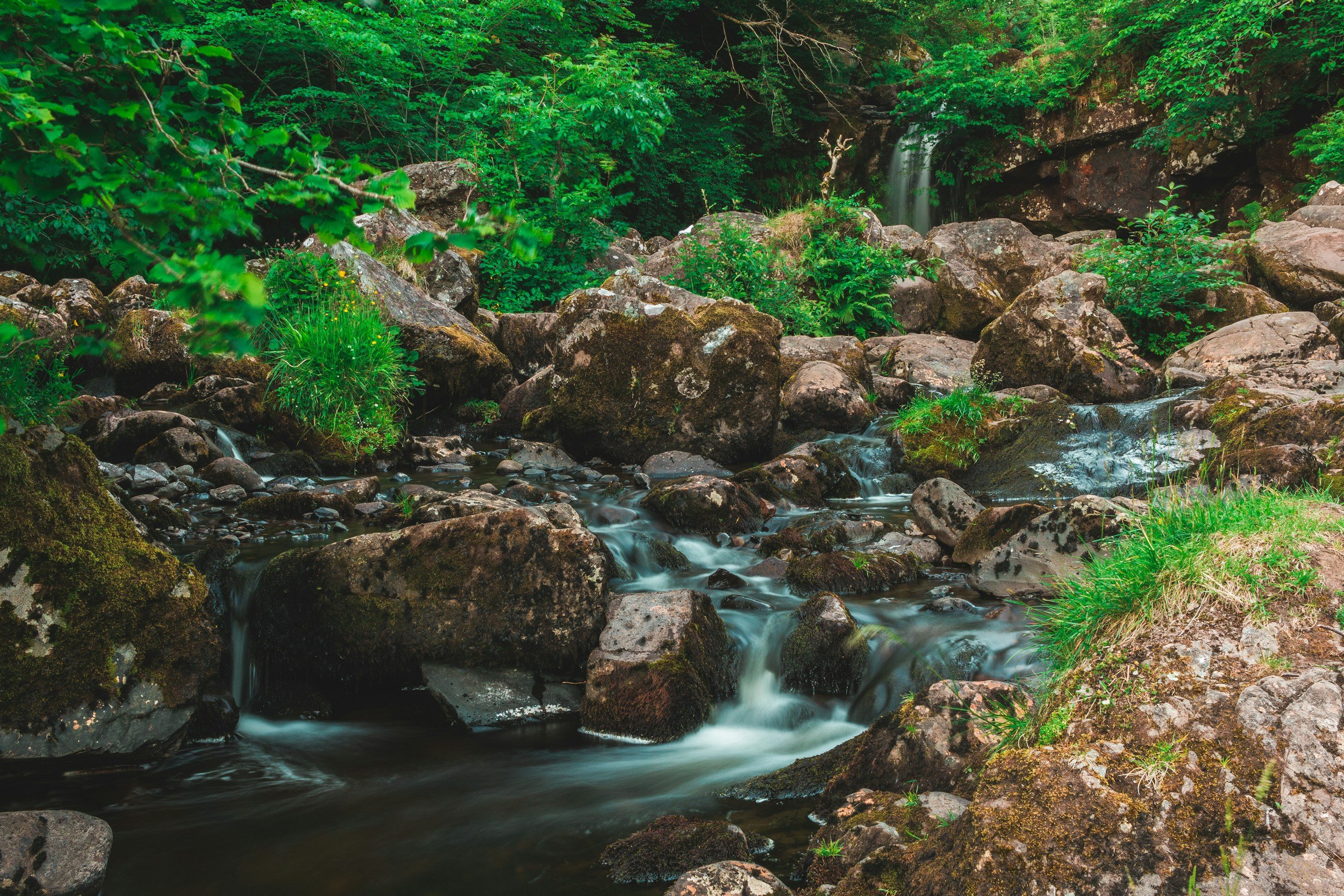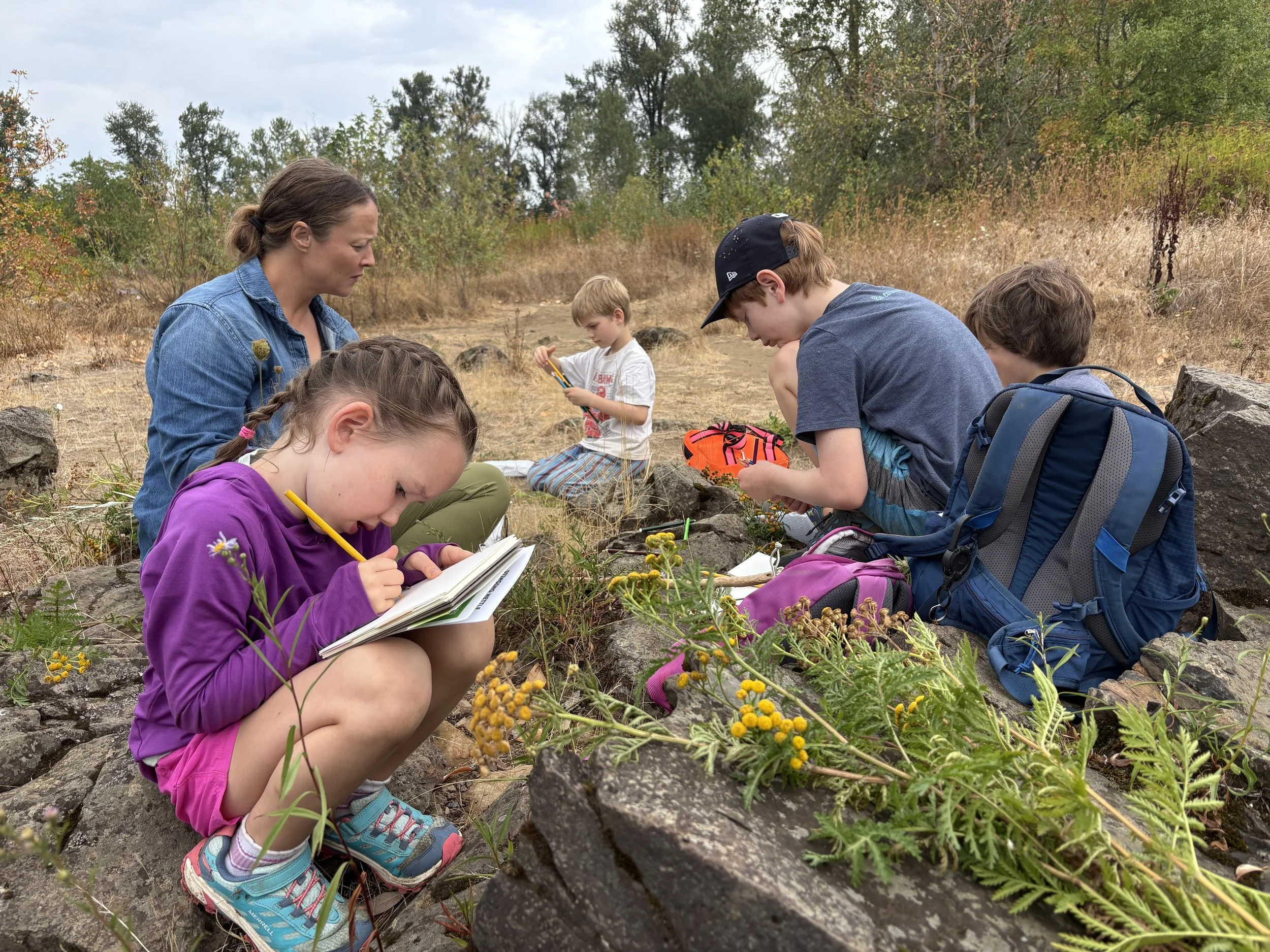
The Wild & Free
The Wild & Free
Ages: 6-9
Wednesdays & Fridays
8:30 am to 4pm
Cost: $640/ month
Location: Elk Rock Island
Teacher: Sara Murphy
SPOTS AVAILABLE!
ENROLL TODAY
A Homeschool extension program designed to connect kids with the beauty of the PNW. We will spend the day exploring the natural world through play and child directed learning. Our focus will be on ecology of place, indigenous ways of knowing, bushcraft and ancestral skills
What It’s All About
This program is built on five foundational pillars.
Cultivating Stillness and Deep Connection
Through daily sit spots and slow observation of our natural world, we begin to equate the stillness of our body with the unfolding wonders of the natural world. When we are still the wild comes near.
Building Community & Thoughtful Communication
We practice and model active listening and authentic, feelings and needs based communication. When we listen with our whole body, we get the gift of learning about what is alive in those around us. When we know others are listening in that way, it becomes easy to share what is alive in us.
Ancestral Skills As Connection to The Natural World
Each skill we acquire is done with the goal of deepening awareness of our interconnected relationship with the world around us. We learn how to harvest a plant and how to help it grow. We learn where the turtle likes to make it’s home by following it’s food source, and why the moss grows freely on one side of a tree. Each of these things leads us deeper into relationship with the non-human living world.
Discovering the Joy of Authentic Self-Expression
Whether through art, dance, sharing circle, or song we encourage the radical and authentic expression of what is in each of our wild hearts. Conversely we seek to recognize the strengths and beauty in each other daily– reveling in our diversity, celebrating our similarities.
Reverence, Reciprocity, & Respect
We approach the natural world and the people in it with a recognition of the sovereignty of all living things. We are all connected, and so we care for each other as if caring for ourselves. We leave berries on the bush so that other animals can eat. We say thank you to the willow when we harvest their branches to make baskets; and we help each other with the knowledge that, when we need it, they will help us in return.
Daily Rhythm
8:30: Drop Off
We gather together at the entrance of Elk Rock Island. Perhaps settling in at the table to craft or playing on the playground with our friends.
9:00: Gathering Circle
After Hiking out to our gathering spot, we will take time to share, set our expectations for the day, and decide as a group where we would like to play.
9:30: Morning Play
An unstructured playtime for kids to explore, climb trees, and have fun.
11:00: Sit Spot & Nature Sharing
A sit spot is a place chosen by the student where they will sit in observation and stillness of the natural world. The spot never changes, but what is happening there will. Each of us will observe and share our findings.
10:30: Snack
We will reconvene to eat a little snack and recharge.
12:00: Lunch
We will, generally, hike back to the entrance of the park to eat our lunch. Allowing time for a little play and a little rest.
1:00: Exploration & Skill Building
After lunch, we head out to practice our ancestral skills, discover new plants and animals, and/or further investigate a new habitat.
2:00: Snack
We will reconvene to eat a little snack and recharge.
2:30: Afternoon Play
We process what we have learned through play and connect deeply through our imagination.
3:30: Reconvene & Closing Circle
We begin hiking back to the entrance, stopping at our gathering spot along the way. We will stop to share, process, and plan for the next time.
4:00: Heading Home
Pick up at the entrance to the park.
What about curriculum?
Our curriculum is emergent and ever changing. Each day will bring new discoveries and each season its own lessons. That being said, there are a few guiding structures that we will utilize to ground deeply into learning.
Plant Safety, Recognition, and Proper Identification:
It is crucial that we learn to recognize what plants may harm or help us. We will begin by identifying potentially harmful plants, such as poison oak, hemlock, giant hogweed, and stinging nettle, so we can learn to keep ourselves safe. From there we begin questing into innocuous, beneficial and even edible plants.
As we identify local species of flora and fauna, we begin to notice their habits, food sources, and preferred shelter. This leads us to explore the interweaving systems of life within the forest. We begin to recognize the bio-indicators that show us a system is healthy and those that indicate a lack. We use our knowledge of the interconnection of species to help us find the nesting spot of a swallow or the ideal growing place for trillium.
Habitats, Ecosystems, and Microbiomes:
Ancestral Skills:
Our ancestors were deeply connected to the land and its rhythms. Part of this program is rekindling that connection through traditional skills, such as shelter building, foraging, navigating, moving with stealth and care, and cultivating the ability to hear the deep sounds of the forest.
Non-Violent Communication & Radical Inclusion:
We learn to examine the roots of our feelings and the needs behind them, communicating those without fear. Through this we learn to listen, receive, and reflect. We use these opportunities of vulnerability to learn about the diversity in our classroom and the wider community, to adjust and grow so that all may be able to be present, seen, and authentically themselves.
“ Ten thousand thumbs up!”
Milo (Age 6)
“I wish the day could last forever!”
Kevin (Age 8)
"The only thing missing is dinosaurs.”
Ragnar (Age 6)
FAQs
-
Register for this course by clicking on the registration button at the top of the page. Fill out and sign the forms, and we will reach out to you shortly after to arrange a $50 course deposit for the single day or a $75 course deposit for the two day program. This deposit is refundable up to a month before the course starts. After that point it will be rolled into the supply fee and can no longer be refunded. First months tuition, and all following monthly tuition, are due by the 5th of every month.
-
Our maximum teacher to student ratio for this course is 1:8. We will never have more than 8 students in this class. Occasionally, there may be a visiting teacher present, which will lower the class ratio to 1:4. We believe that small class sizes are the best environment for deep learning and deep relationships. We are committed to maintaining an intimate class size to better serve the students, teachers, and families.
-
The Wild & Free program will run on Wednesdays and Fridays throughout the academic year.
Fall: September-November
Winter: January-March
Spring: April - June
-
Class will be held rain or shine! That being said, there may be some days where it is unsafe for us to be outside, such as extreme heat, thunderstorms, or days when the roads are unsafe to drive on. If this happens, we will do our best to schedule make up days for the course. If we are unable to do so, we will issue refunds in the form of future class credits for every day after the first missed class date.
-
While each day will naturally have it’s own discoveries and projects, there is not a specific difference in the focus of each day. Both days will focus on the natural world, ancestral skills, and child led inquiry.
-
Due to the nature of an outdoor program, we are not able to provide food. Each child is responsible for bringing their own lunch and snack items. Additionally, we will be able to offer water refills from our class water cooler, but we ask that each student come with a full water bottle.




